Ehrhardt’s cory - Corydoras ehrhardti
Scientific name: Corydoras ehrhardti
Common name: Ehrhardt’s cory
Family: Callichthyidae
Usual size in fish tanks: 3 - 4 cm (1.18 - 1.57 inch)
014
Recommended pH range: 6.4 - 7.3
Recommended water hardness: 4 - 20°N (71.43 - 357.14ppm)
0°C 32°F30°C 86°F
Recommended temperature range: 23 - 27 °C (73.4 - 80.6°F)
The way how these fish reproduce: Spawning
Where the species comes from: South America
Temperament to its own species: peaceful
Temperament toward other fish species: peaceful
Usual place in the tank: Bottom levels
Origin
The Ehrhardt’s Cory (Corydoras ehrhardti) is native to the freshwater waterways of South America, particularly in Brazil. They inhabit slow-moving rivers and streams with plenty of vegetation and soft substrates. Replicating these natural conditions in the aquarium is key to keeping them healthy and stress-free.
Tank Requirements
Ehrhardt’s Cories are small, peaceful bottom dwellers that require a minimum tank size of 40 liters (10 gallons) for a group of 5 or more. They prefer tanks with soft sand or fine gravel substrate to protect their sensitive barbels while foraging. Provide plenty of hiding places using plants, driftwood, or caves, as they appreciate shaded areas for retreat.
The tank should be well-planted and have low to moderate water flow to mimic their natural habitat. Maintain the water parameters within a temperature range of 23-27°C (73.4-80.6°F), a pH of 6.4-7.3, and a water hardness between 4-20°N (71.43-357.14 ppm). Regular partial water changes are essential to maintain high water quality, as these fish are sensitive to pollutants.
Tankmates
Ehrhardt’s Cories are peaceful and can coexist with a variety of other non-aggressive species. Suitable tankmates include:
- Harlequin Rasbora (Trigonostigma heteromorpha)
- Neon Tetra (Paracheirodon innesi)
- Dwarf Gourami (Colisa lalia)
- Ember Tetra (Hyphessobrycon amandae)
- Angelfish (Pterophyllum scalare)
Food and Feeding
Ehrhardt’s Cories are bottom feeders and will accept most types of food. To ensure they receive adequate nutrition, use quality sinking pellets, flakes, and algae wafers as the staple diet. They also enjoy treats of live or frozen foods such as bloodworms, brine shrimp, and white worms. Offer these treats 1-2 times a week to provide variety and maintain their health. As they are active during the day and night, feeding them in the evening can ensure that they get their share of food without competition from faster swimmers.
Sexing
Determining the sex of Ehrhardt’s Corydoras can be challenging. However, when viewed from above, females are generally slightly larger and have a plumper body shape compared to males. The fuller body shape of females becomes more noticeable when they are ready to spawn.
Breeding
While there are limited reports of Corydoras ehrhardti being bred in home aquariums, they are believed to be egg scatterers, similar to other Corydoras species. To encourage breeding, provide a heavily planted tank with soft, acidic water and raise the temperature slightly. The addition of spawning mops or fine-leaved plants will give the female a surface to attach the eggs. After spawning, remove the adults to prevent them from eating the eggs. The eggs should hatch within 3-5 days, and the fry will be free-swimming a few days later. Feed the fry with infusoria or finely crushed flakes initially, then gradually introduce newly hatched brine shrimp as they grow.
Lifespan
The expected lifespan of Ehrhardt’s Corydoras is 3-5 years when kept in optimal water conditions and provided with a balanced diet. Regular tank maintenance, including water changes, is essential to support their health and longevity.
Short Description
Ehrhardt’s Corydoras are small, peaceful bottom-dwelling fish that are best kept in groups of at least 5 to promote natural schooling behavior. They prefer a tank with plenty of hiding places and soft substrates to prevent damage to their barbels. Due to their sensitive nature, they should be housed with other non-aggressive species in a well-maintained aquarium. Their charming behavior and ease of care make them an excellent addition to a peaceful community setup.
Picture
Bought by aqua-fish.net from jjphoto.dk.


 Aspidoras
Aspidoras  Giant
Giant  Hognosed
Hognosed  Emerald
Emerald  Cascarudo
Cascarudo  Acre
Acre  Adolfo’s
Adolfo’s  Bronze
Bronze 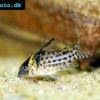 Agassizii’s
Agassizii’s  Spotted
Spotted  Skunk
Skunk  Corydoras
Corydoras 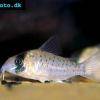 Fairy
Fairy  Corydoras
Corydoras  Pink
Pink 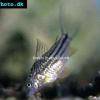 San
San  Bond’s
Bond’s  Spotted
Spotted  Tailspot
Tailspot  Concolor
Concolor  Cope’s
Cope’s 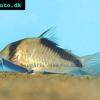 Sand’s
Sand’s  False
False  False
False  Elegant
Elegant 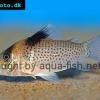 Saddle
Saddle  Fowler’s
Fowler’s  Gomezi
Gomezi 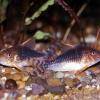 Palespotted
Palespotted 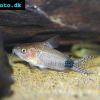 Guapore
Guapore  Dainty
Dainty  Mosaic
Mosaic  Imitator
Imitator  Julii
Julii  Leopard
Leopard 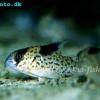 Black
Black  Slant-bar
Slant-bar  Bluespotted
Bluespotted  False
False  Bandit
Bandit  Mini
Mini 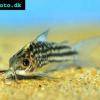 Napo
Napo  Corydoras
Corydoras 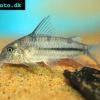 Blue
Blue  Nijssen’s
Nijssen’s 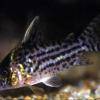 Ornate
Ornate  Peppered
Peppered  Panda
Panda  Albertini
Albertini  Pastaza
Pastaza  Corydoras
Corydoras  Many-spotted
Many-spotted  Pretty
Pretty  Dwarf
Dwarf  Iridescent
Iridescent  Reticulated
Reticulated 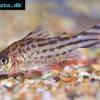 Bannertail
Bannertail  Robust
Robust  Schwartz’s
Schwartz’s  Black
Black 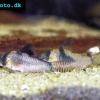 Longnosed
Longnosed  Seuss’
Seuss’  Smudge
Smudge  Masquerade
Masquerade 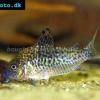 False
False  Millenium
Millenium  Pinkthroat
Pinkthroat  Sterba’s
Sterba’s  Longsnout
Longsnout  False
False  Miguelito
Miguelito 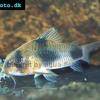 Twosaddle
Twosaddle  Xingu
Xingu 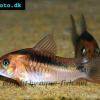 Black
Black  Porthole
Porthole  Flagtail
Flagtail  Brown
Brown  Spotted
Spotted